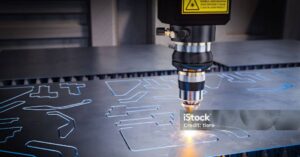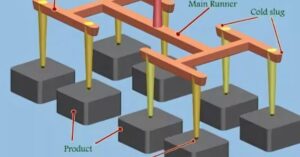Plastic waste is highly frowned upon across the world due to its negative effects on the environment. Therefore, companies producing plastic products aim to reduce their waste as much as they can by refining machine precision and improving surface during production. Mold design goes a long way in cutting- down on plastic waste and perfectly-molded designs are the key to even injection into the formation cavity and structural design of the finished product. On this page, there is an overview of factors affecting precision and surface quality as well as pointers to the best practices that can help you improve precision during design. Read on to the end, where you will find mentions of the latest technologies in mold design.

Key Factors Influencing
The unique properties of plastic affect how precise you can get it, and it determines the quality of the product you get in the end. You might have to use high heat when injecting the plastic mold design for strong products, but the final product will have far better structural integrity.
Regulating processing conditions defines how close you can get to achieving perfection when manufacturing custom parts. First, you need impeccable temperature control techniques to avoid shrinkage and warping, both of which negatively affect the final product. While at it, you have to apply the right amount of pressure while the plastic resin is still hot and malleable to form the right shapes.
Mold design plays a critical role in manufacturing custom molded plastic parts and is the foundation of improvement. You can refine injection mold designs to account for pressure applied to heated plastic, thereby maintaining the durability of your products. Once you have achieved a working mold that takes care of all contingencies, you can proceed to mass-produce marketable plastic products that are both durable and consistent.
Design Strategies to Improve Precision
Manufacturers have made significant strides in refining mold design and improving precision. Using industry-standard practices, you can save time and come up with great designs that give you a competitive edge in today’s markets. Here are the top design strategies you can incorporate to improve precision.
Optimizing Mold Tolerances
Mold tolerance is the deviation from the finished product that can differ from what is envisioned in the design. Therefore, mold tolerance parameters must be tight and as close to the design as possible. In simple words, tolerances give room for the finished product to be fully functional and allow for usage with other components. Designers are tasked with calculating and maintaining tolerances during mold fabrication. Major considerations include weight distribution across the center of gravity. Scientific mold design incorporates shot to shot weight variation which takes into account 3 standard deviations divided by the mean weight. Perfect tolerance is achieved the results falls between 0.4% and 0.5%. In the same process, the comparable capability is calculated using 1% of the weight divided by 3 standard deviations.
Enhancing Dimensional Stability
Ideas generated through computer-aided design are brought to life through high-precision CNC machines that interpret designs and control cutting tools to achieve the perfect mold. Thus, using CNC machines in mold creation helps you create molds with optimal stability while reducing the wastage of materials and saving time.
Furthermore, computer-aided manufacturing processes can simulate the outcome of different stages. You can then use the reports from simulation prediction to adjust designs and account for shrinkage and warping. The end result is a mold that is precise and stable.

Mold Flow Analysis
Mold Flow software improves the quality of your design by giving you a chance to make changes for improvement before cutting the mold. That way, you can come up with precise molds that shape plastic into durable and usable products with minimal waste. Any defects resulting from heating plastic, such as sink marks, warping, stress marks, and air pockets can be identified before production and the necessary measures taken to rectify said defects.
Techniques to Enhance Surface Quality
Efficient mold design accounts for surface quality so that you end up with perfect finishes and market-ready products. By using the techniques discussed below, you can improve the appearance of your plastic products and shorten the time taken to move products from the manufacturing line to stores ready for consumption.
Polishing and Texturing the Mold Surface
Polishing involves removing defects on the surface of your plastic products to end up with smooth and consistent surfaces. Texturing on the other hand is the process of creating patterns and functional friction points that you want to be part of the finished product, commonly done by sandblasting and engraving.
Polishing can be done via manual polishing or EDM machines which help to hasten the process at an industrial scale. Polished products have smooth surfaces, which is good for cosmetic products while texturing improves the grip on products made for daily use.
Optimizing Gate and Runner Design
Gate location controls how plastic resin flows through the mold and the overall finish at the end of production. Where you place gates determines the amount of pressure required to fill in crevices and can create air pockets if the flow speed is higher than required.
Using the best practices for your runner system reduces blemishes, allowing you to get to the final product quicker. First, consider a shorter runner length to maintain pressure and keep a standard runner diameter to keep resin flowing throughout the process. Design runners with smooth corners to prevent plastic resin from clogging up around edges and optimize runner layout to maintain uniform thickness on all walls.

Material Selection for Mold Construction
Materials chosen for mold construction affect how long you get to use the mold and whether the resin running through achieves the desired outcome. Opt for corrosion-resistant materials like steel to prevent unwanted etches and dents when the plastic settles in the mold.
Plastic often sticks to the mold material during the colling process. Therefore, you need to maintain smoothness across all surfaces on the mold. In addition, you should regularly check molds to identify defects and quickly fix or replace any imperfections falling out of the recommended mold tolerances.
Innovative Technologies in Mold Design
In recent years, there have been great innovations in mold design, with more yet to come. Here is an overview of the most significant ones:
Advanced Cooling Systems
Revolutionary cooling systems have reduced the time it takes to have plastic molded products at TDL ready for customers. Conformal cooling channels greatly shorten the manufacturing cycle, while maintaining the shape and structural integrity of plastic products. Similarly, incorporating 3D printing in mold design enables you to come up with complex molds that give allowance for efficient cooling.
Hot Runner Systems
Customizable hot runner systems have immensely reduced material wastage through effective gate and runner placement. These allow you to control how plastic resin flows and reduce blemishes on the final product. Less time is spent polishing and texturing to improve the surface finish on final products.
Self-Lubricating Mold Components
Hot plastic is sticky, and this has been a problem for long. Self-lubricating machines have helped to minimize defects on plastic products caused by material sticking on molds. Through repetitive automatic lubrication, production can go on for hours.
Conclusion
Using the latest mold design technologies enables you to come up with quality plastic products. By now, you should know the importance of choosing the right material for mold design and effective design strategies to help you shorten the production process. In addition, you have information on the latest technologies like cooling systems and self-lubricating machines that reduce blemishes. With all the tools at your disposal, you can effectively design molds that optimize precision and help to manufacture top-quality plastic products. Even though mold design and analysis technologies are highly priced, the investment pays off in the long run. You can streamline production from start to finish, minimize wastage, and create market-ready products that require little to no polishing before release to the consumers.











